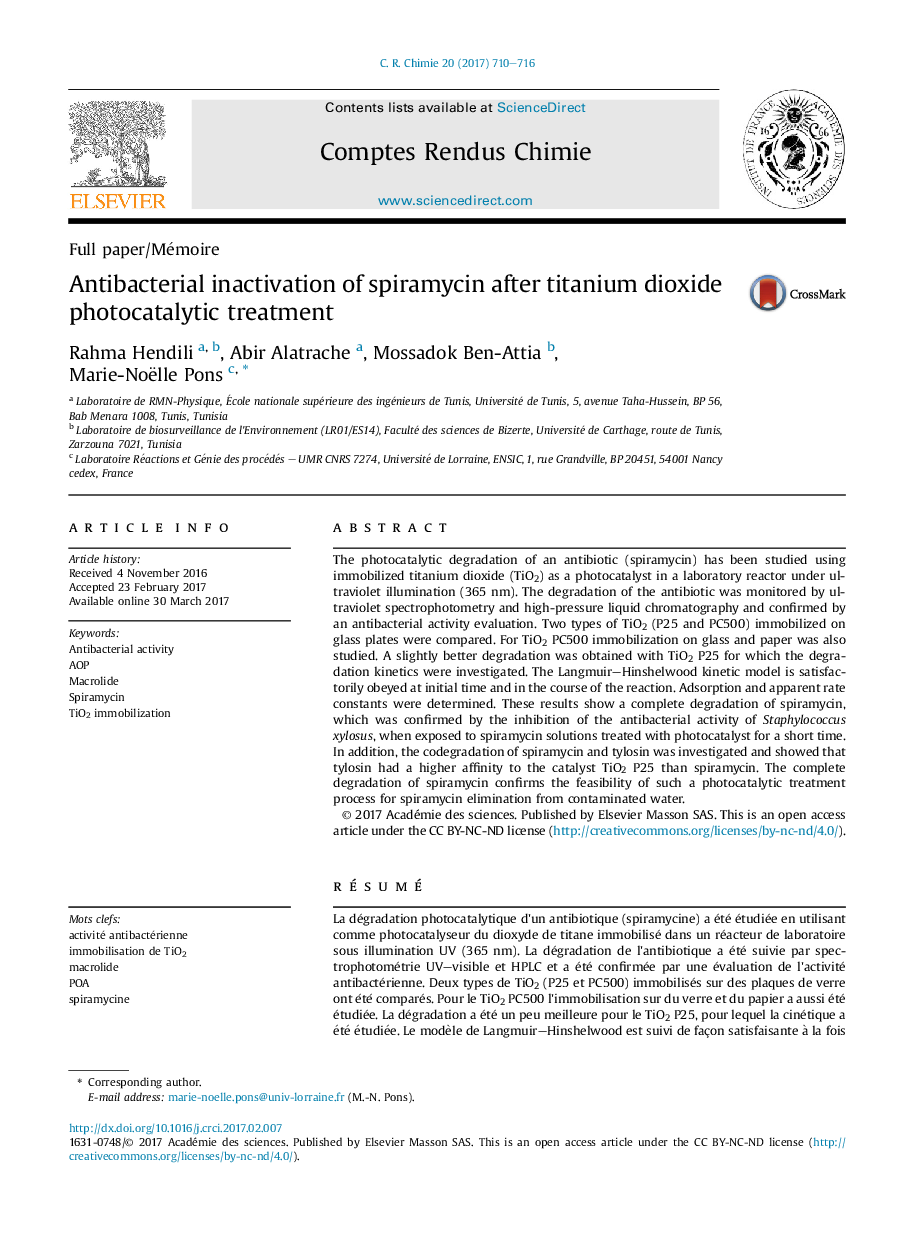| کد مقاله | کد نشریه | سال انتشار | مقاله انگلیسی | نسخه تمام متن |
|---|---|---|---|---|
| 6468629 | 1362319 | 2017 | 7 صفحه PDF | دانلود رایگان |
The photocatalytic degradation of an antibiotic (spiramycin) has been studied using immobilized titanium dioxide (TiO2) as a photocatalyst in a laboratory reactor under ultraviolet illumination (365Â nm). The degradation of the antibiotic was monitored by ultraviolet spectrophotometry and high-pressure liquid chromatography and confirmed by an antibacterial activity evaluation. Two types of TiO2 (P25 and PC500) immobilized on glass plates were compared. For TiO2 PC500 immobilization on glass and paper was also studied. A slightly better degradation was obtained with TiO2 P25 for which the degradation kinetics were investigated. The Langmuir-Hinshelwood kinetic model is satisfactorily obeyed at initial time and in the course of the reaction. Adsorption and apparent rate constants were determined. These results show a complete degradation of spiramycin, which was confirmed by the inhibition of the antibacterial activity of Staphylococcus xylosus, when exposed to spiramycin solutions treated with photocatalyst for a short time. In addition, the codegradation of spiramycin and tylosin was investigated and showed that tylosin had a higher affinity to the catalyst TiO2 P25 than spiramycin. The complete degradation of spiramycin confirms the feasibility of such a photocatalytic treatment process for spiramycin elimination from contaminated water.
RésuméLa dégradation photocatalytique d'un antibiotique (spiramycine) a été étudiée en utilisant comme photocatalyseur du dioxyde de titane immobilisé dans un réacteur de laboratoire sous illumination UV (365 nm). La dégradation de l'antibiotique a été suivie par spectrophotométrie UV-visible et HPLC et a été confirmée par une évaluation de l'activité antibactérienne. Deux types de TiO2 (P25 et PC500) immobilisés sur des plaques de verre ont été comparés. Pour le TiO2 PC500 l'immobilisation sur du verre et du papier a aussi été étudiée. La dégradation a été un peu meilleure pour le TiO2 P25, pour lequel la cinétique a été étudiée. Le modèle de Langmuir-Hinshelwood est suivi de façon satisfaisante à la fois au début et au cours de l'expérience. Les constantes d'adsorption et de vitesse apparentes ont été déterminées. Ces résultats montrent la dégradation complète de la spiramycine et a été confirmée par l'inhibition de son action sur la croissance de S. xylosus. De plus la co-dégradation de la spiramycine et de la tylosine a été étudiée et a montré une plus grande affinité de la tylosine pour le TiO2 P25, par rapport à la spiramycine. La dégradation complète de la spiramycine confirme la faisabilité d'un traitement photocatalytique pour l'élimination de cet antibiotique d'eaux contaminées.
Journal: Comptes Rendus Chimie - Volume 20, Issue 7, July 2017, Pages 710-716
